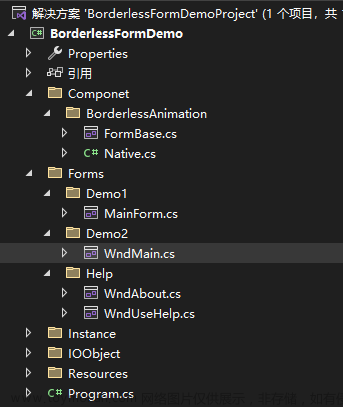上一节我们主要分析了xlua中C# Call lua的实现思路,本节我们将根据Examples 03_UIEvent,分析lua Call C#的底层实现。例子场景里有一个简单的UI面板,面板中包含一个input field,一个button:

输入任意文本,点击button,就会打印出输入的内容:

响应点击事件的代码是在lua层,位于ButtonInteraction.lua.txt这个文件中,lua代码很简单,就是一个简单的函数:
function start()
print("lua start...")
self:GetComponent("Button").onClick:AddListener(function()
print("clicked, you input is '" ..input:GetComponent("InputField").text .."'")
end)
end
那么C#层从哪里读取到这个文件的呢?可以看到,Button这个GameObject上绑了上一节我们提到过的LuaBehaviour组件,而组件里设置的Lua Script就是这个文件了:

上一节我们说过,LuaBehaviour组件会在Awake的时候会执行lua代码,获取lua层写的start函数,然后在MonoBehaviour的Start中执行它。在lua层的start函数中,首先可以发现一个self,这个self也是在C#层Awake的时候设置的,对应的就是C#的LuaBehaviour对象。和tolua一样,xlua也会把C#对象当作userdata来处理,每个要push到lua层的C#类型都有唯一的type_id,对应到不同的metatable,用来定义userdata的行为。并且,除了值类型和枚举类型之外,所有push到lua层的C#对象,都会在C#层缓存,这一点也是和tolua一样的,甚至缓存的数据结构也大差不差。
public void Push(RealStatePtr L, object o)
{
if (needcache && (is_enum ? enumMap.TryGetValue(o, out index) : reverseMap.TryGetValue(o, out index)))
{
if (LuaAPI.xlua_tryget_cachedud(L, index, cacheRef) == 1)
{
return;
}
}
bool is_first;
int type_id = getTypeId(L, type, out is_first);
index = addObject(o, is_valuetype, is_enum);
LuaAPI.xlua_pushcsobj(L, index, type_id, needcache, cacheRef);
}
xlua_tryget_cachedud函数就是通过C#缓存拿到的index,去lua层的缓存去拿userdata,lua层的缓存与C#不同,它只负责查询,不负责存储,因此是一个value为弱引用的弱表,这一点和tolua也是一样的,xlua在初始化时就会将这个弱表准备好:
LuaAPI.lua_newtable(L);
LuaAPI.lua_newtable(L);
LuaAPI.xlua_pushasciistring(L, "__mode");
LuaAPI.xlua_pushasciistring(L, "v");
LuaAPI.lua_rawset(L, -3);
LuaAPI.lua_setmetatable(L, -2);
cacheRef = LuaAPI.luaL_ref(L, LuaIndexes.LUA_REGISTRYINDEX);
由于这个缓存是弱表,意味着userdata在被真正gc之前,弱表里对应的值有可能已经不存在了。那么xlua_tryget_cachedud这个函数有可能是取不到userdata的:
LUA_API int xlua_tryget_cachedud(lua_State *L, int key, int cache_ref) {
lua_rawgeti(L, LUA_REGISTRYINDEX, cache_ref);
lua_rawgeti(L, -1, key);
if (!lua_isnil(L, -1))
{
lua_remove(L, -2);
return 1;
}
lua_pop(L, 2);
return 0;
}
取不到的话就通过xlua_pushcsobj这个函数新增一个userdata:
static void cacheud(lua_State *L, int key, int cache_ref) {
lua_rawgeti(L, LUA_REGISTRYINDEX, cache_ref);
lua_pushvalue(L, -2);
lua_rawseti(L, -2, key);
lua_pop(L, 1);
}
LUA_API void xlua_pushcsobj(lua_State *L, int key, int meta_ref, int need_cache, int cache_ref) {
int* pointer = (int*)lua_newuserdata(L, sizeof(int));
*pointer = key;
if (need_cache) cacheud(L, key, cache_ref);
lua_rawgeti(L, LUA_REGISTRYINDEX, meta_ref);
lua_setmetatable(L, -2);
}
但是,xlua设置userdata metatable的做法和tolua完全不同。xlua使用delay wrap的策略,即只有某个C#类型的对象push到了lua层,才会将这个C#类型的信息,真正地加载到lua层,在此之前,这个metatable并不存在;而tolua默认是在一开始就wrap的,这样的话类型一多,初始化的时间就大大增加,而且根据二八定律,可能绝大部分的类型在一开始压根用不到。
那么,这个delay wrap具体是怎么实现的呢?既然它是在C#对象push到lua层触发的,那么显而易见,在获取这个类的type_id时,就要把C#类的信息加载进来了:
internal int getTypeId(RealStatePtr L, Type type, out bool is_first, LOGLEVEL log_level = LOGLEVEL.WARN)
{
int type_id;
if (!typeIdMap.TryGetValue(type, out type_id)) // no reference
{
LuaAPI.luaL_getmetatable(L, alias_type == null ? type.FullName : alias_type.FullName);
if (LuaAPI.lua_isnil(L, -1)) //no meta yet, try to use reflection meta
{
LuaAPI.lua_pop(L, 1);
if (TryDelayWrapLoader(L, alias_type == null ? type : alias_type))
{
LuaAPI.luaL_getmetatable(L, alias_type == null ? type.FullName : alias_type.FullName);
}
else
{
throw new Exception("Fatal: can not load metatable of type:" + type);
}
}
typeIdMap.Add(type, type_id);
}
return type_id;
}
负责这件事情的函数就是TryDelayWrapLoader。在例子中,由于我们没有生成过类的wrap,默认就会使用反射的方式来注册各种C#方法与成员。具体实现的逻辑比较复杂,主要在ReflectionWrap这个函数中:
public static void ReflectionWrap(RealStatePtr L, Type type, bool privateAccessible)
{
LuaAPI.lua_checkstack(L, 20);
int top_enter = LuaAPI.lua_gettop(L);
ObjectTranslator translator = ObjectTranslatorPool.Instance.Find(L);
//create obj meta table
LuaAPI.luaL_getmetatable(L, type.FullName);
if (LuaAPI.lua_isnil(L, -1))
{
LuaAPI.lua_pop(L, 1);
LuaAPI.luaL_newmetatable(L, type.FullName);
}
LuaAPI.lua_pushlightuserdata(L, LuaAPI.xlua_tag());
LuaAPI.lua_pushnumber(L, 1);
LuaAPI.lua_rawset(L, -3);
int obj_meta = LuaAPI.lua_gettop(L);
LuaAPI.lua_newtable(L);
int cls_meta = LuaAPI.lua_gettop(L);
LuaAPI.lua_newtable(L);
int obj_field = LuaAPI.lua_gettop(L);
LuaAPI.lua_newtable(L);
int obj_getter = LuaAPI.lua_gettop(L);
LuaAPI.lua_newtable(L);
int obj_setter = LuaAPI.lua_gettop(L);
LuaAPI.lua_newtable(L);
int cls_field = LuaAPI.lua_gettop(L);
//set cls_field to namespace
SetCSTable(L, type, cls_field);
//finish set cls_field to namespace
LuaAPI.lua_newtable(L);
int cls_getter = LuaAPI.lua_gettop(L);
LuaAPI.lua_newtable(L);
int cls_setter = LuaAPI.lua_gettop(L);
LuaCSFunction item_getter;
LuaCSFunction item_setter;
makeReflectionWrap(L, type, cls_field, cls_getter, cls_setter, obj_field, obj_getter, obj_setter, obj_meta,
out item_getter, out item_setter, privateAccessible ? (BindingFlags.Public | BindingFlags.NonPublic) : BindingFlags.Public);
// init obj metatable
LuaAPI.xlua_pushasciistring(L, "__gc");
LuaAPI.lua_pushstdcallcfunction(L, translator.metaFunctions.GcMeta);
LuaAPI.lua_rawset(L, obj_meta);
LuaAPI.xlua_pushasciistring(L, "__tostring");
LuaAPI.lua_pushstdcallcfunction(L, translator.metaFunctions.ToStringMeta);
LuaAPI.lua_rawset(L, obj_meta);
LuaAPI.xlua_pushasciistring(L, "__index");
LuaAPI.lua_pushvalue(L, obj_field);
LuaAPI.lua_pushvalue(L, obj_getter);
translator.PushFixCSFunction(L, item_getter);
translator.PushAny(L, type.BaseType());
LuaAPI.xlua_pushasciistring(L, LuaIndexsFieldName);
LuaAPI.lua_rawget(L, LuaIndexes.LUA_REGISTRYINDEX);
LuaAPI.lua_pushnil(L);
LuaAPI.gen_obj_indexer(L);
//store in lua indexs function tables
LuaAPI.xlua_pushasciistring(L, LuaIndexsFieldName);
LuaAPI.lua_rawget(L, LuaIndexes.LUA_REGISTRYINDEX);
translator.Push(L, type);
LuaAPI.lua_pushvalue(L, -3);
LuaAPI.lua_rawset(L, -3);
LuaAPI.lua_pop(L, 1);
LuaAPI.lua_rawset(L, obj_meta); // set __index
LuaAPI.xlua_pushasciistring(L, "__newindex");
LuaAPI.lua_pushvalue(L, obj_setter);
translator.PushFixCSFunction(L, item_setter);
translator.Push(L, type.BaseType());
LuaAPI.xlua_pushasciistring(L, LuaNewIndexsFieldName);
LuaAPI.lua_rawget(L, LuaIndexes.LUA_REGISTRYINDEX);
LuaAPI.lua_pushnil(L);
LuaAPI.gen_obj_newindexer(L);
//store in lua newindexs function tables
LuaAPI.xlua_pushasciistring(L, LuaNewIndexsFieldName);
LuaAPI.lua_rawget(L, LuaIndexes.LUA_REGISTRYINDEX);
translator.Push(L, type);
LuaAPI.lua_pushvalue(L, -3);
LuaAPI.lua_rawset(L, -3);
LuaAPI.lua_pop(L, 1);
LuaAPI.lua_rawset(L, obj_meta); // set __newindex
//finish init obj metatable
LuaAPI.xlua_pushasciistring(L, "UnderlyingSystemType");
translator.PushAny(L, type);
LuaAPI.lua_rawset(L, cls_field);
if (type != null && type.IsEnum())
{
LuaAPI.xlua_pushasciistring(L, "__CastFrom");
translator.PushFixCSFunction(L, genEnumCastFrom(type));
LuaAPI.lua_rawset(L, cls_field);
}
//init class meta
LuaAPI.xlua_pushasciistring(L, "__index");
LuaAPI.lua_pushvalue(L, cls_getter);
LuaAPI.lua_pushvalue(L, cls_field);
translator.Push(L, type.BaseType());
LuaAPI.xlua_pushasciistring(L, LuaClassIndexsFieldName);
LuaAPI.lua_rawget(L, LuaIndexes.LUA_REGISTRYINDEX);
LuaAPI.gen_cls_indexer(L);
//store in lua indexs function tables
LuaAPI.xlua_pushasciistring(L, LuaClassIndexsFieldName);
LuaAPI.lua_rawget(L, LuaIndexes.LUA_REGISTRYINDEX);
translator.Push(L, type);
LuaAPI.lua_pushvalue(L, -3);
LuaAPI.lua_rawset(L, -3);
LuaAPI.lua_pop(L, 1);
LuaAPI.lua_rawset(L, cls_meta); // set __index
LuaAPI.xlua_pushasciistring(L, "__newindex");
LuaAPI.lua_pushvalue(L, cls_setter);
translator.Push(L, type.BaseType());
LuaAPI.xlua_pushasciistring(L, LuaClassNewIndexsFieldName);
LuaAPI.lua_rawget(L, LuaIndexes.LUA_REGISTRYINDEX);
LuaAPI.gen_cls_newindexer(L);
//store in lua newindexs function tables
LuaAPI.xlua_pushasciistring(L, LuaClassNewIndexsFieldName);
LuaAPI.lua_rawget(L, LuaIndexes.LUA_REGISTRYINDEX);
translator.Push(L, type);
LuaAPI.lua_pushvalue(L, -3);
LuaAPI.lua_rawset(L, -3);
LuaAPI.lua_pop(L, 1);
LuaAPI.lua_rawset(L, cls_meta); // set __newindex
LuaCSFunction constructor = typeof(Delegate).IsAssignableFrom(type) ? translator.metaFunctions.DelegateCtor : translator.methodWrapsCache.GetConstructorWrap(type);
if (constructor == null)
{
constructor = (RealStatePtr LL) =>
{
return LuaAPI.luaL_error(LL, "No constructor for " + type);
};
}
LuaAPI.xlua_pushasciistring(L, "__call");
translator.PushFixCSFunction(L, constructor);
LuaAPI.lua_rawset(L, cls_meta);
LuaAPI.lua_pushvalue(L, cls_meta);
LuaAPI.lua_setmetatable(L, cls_field);
LuaAPI.lua_pop(L, 8);
System.Diagnostics.Debug.Assert(top_enter == LuaAPI.lua_gettop(L));
}
相比于tolua只使用两个table,xlua使用了若干的table来辅助索引查找C#的方法和成员。从代码中可以看出,cls_meta,cls_field,cls_getter和cls_setter是用直接给类访问用的,比如一些静态的方法与成员,lua层可以通过namespace和类名直接访问。而相应地,obj_meta,obj_field,obj_getter和obj_setter是给userdata访问用的,对应C#层实例方法与成员。从命名中也可看出,field对应的是C#的字段和方法,getter对应的是C#的get属性,setter对应的是set属性,meta就是对外设置的metatable了。cls_meta中包含__index,__newindex,__call这三个元方法,这样lua层就可以通过类名创建一个C#对象;obj_meta中包含__index,__newindex,__gc,__tostring这四个元方法,并且它就是userdata的type_id。__index,__newindex这两个元方法,还会通过registry表,记录对应的type,来进行额外的缓存,这么做的目的主要是为了基类查找,xlua不像tolua一样,嵌套使用多个metatable来实现继承机制。
那么field,getter,setter这三种table是如何跟meta进行关联的呢?xlua使用了一种非常巧妙的机制,以userdata的__index为例,它其实对应着一个函数,这个函数使用包含field,getter,setter这三种table在内,以及其他的一些参数,作为upvalue来引用。
LUA_API int gen_obj_indexer(lua_State *L) {
lua_pushnil(L);
lua_pushcclosure(L, obj_indexer, 7);
return 0;
}
obj_indexer这个函数持有了7个upvalue,是有点多,注释里也标明了每个upvalue的用途:
//upvalue --- [1]: methods, [2]:getters, [3]:csindexer, [4]:base, [5]:indexfuncs, [6]:arrayindexer, [7]:baseindex
//param --- [1]: obj, [2]: key
LUA_API int obj_indexer(lua_State *L) {
if (!lua_isnil(L, lua_upvalueindex(1))) {
lua_pushvalue(L, 2);
lua_gettable(L, lua_upvalueindex(1));
if (!lua_isnil(L, -1)) {//has method
return 1;
}
lua_pop(L, 1);
}
if (!lua_isnil(L, lua_upvalueindex(2))) {
lua_pushvalue(L, 2);
lua_gettable(L, lua_upvalueindex(2));
if (!lua_isnil(L, -1)) {//has getter
lua_pushvalue(L, 1);
lua_call(L, 1, 1);
return 1;
}
lua_pop(L, 1);
}
if (!lua_isnil(L, lua_upvalueindex(6)) && lua_type(L, 2) == LUA_TNUMBER) {
lua_pushvalue(L, lua_upvalueindex(6));
lua_pushvalue(L, 1);
lua_pushvalue(L, 2);
lua_call(L, 2, 1);
return 1;
}
if (!lua_isnil(L, lua_upvalueindex(3))) {
lua_pushvalue(L, lua_upvalueindex(3));
lua_pushvalue(L, 1);
lua_pushvalue(L, 2);
lua_call(L, 2, 2);
if (lua_toboolean(L, -2)) {
return 1;
}
lua_pop(L, 2);
}
if (!lua_isnil(L, lua_upvalueindex(4))) {
lua_pushvalue(L, lua_upvalueindex(4));
while(!lua_isnil(L, -1)) {
lua_pushvalue(L, -1);
lua_gettable(L, lua_upvalueindex(5));
if (!lua_isnil(L, -1)) // found
{
lua_replace(L, lua_upvalueindex(7)); //baseindex = indexfuncs[base]
lua_pop(L, 1);
break;
}
lua_pop(L, 1);
lua_getfield(L, -1, "BaseType");
lua_remove(L, -2);
}
lua_pushnil(L);
lua_replace(L, lua_upvalueindex(4));//base = nil
}
if (!lua_isnil(L, lua_upvalueindex(7))) {
lua_settop(L, 2);
lua_pushvalue(L, lua_upvalueindex(7));
lua_insert(L, 1);
lua_call(L, 2, 1);
return 1;
} else {
return 0;
}
}
我们着重看一下第4个upvalue的情况,走到这里说明在当前类中没有查找到,例子中的GetComponent方法是在Component类里,在LuaBehaviour类里自然是查找不到的,那么就需要不断地往父类查找。第4个upvalue是当前类的基类类型base type,第5个upvalue就是缓存了当前所有type的__index元方法函数,那么自然而然就要去这个缓存中查找base type的__index元方法,然后把事情直接交给它做就好了,这其实就是一个递归的做法。为了避免下次还要从缓存中查找基类,这里直接把第4个upvalue置为空,然后把基类的__index元方法缓存到第7个upvalue上。
那问题来了,我们之前提到xlua是delay wrap的,在访问C#对象的时候,它的基类信息很可能还没wrap到lua层。所以这里也需要获取一下基类的type_id。在从缓存中获取__index元方法时,代码中使用的是:
lua_gettable(L, lua_upvalueindex(5));
lua_gettable是会触发metatable的,这个缓存table在xlua初始化时就设置了一个metatable:
LuaAPI.lua_newtable(rawL); //metatable of indexs and newindexs functions
LuaAPI.xlua_pushasciistring(rawL, "__index");
LuaAPI.lua_pushstdcallcfunction(rawL, StaticLuaCallbacks.MetaFuncIndex);
LuaAPI.lua_rawset(rawL, -3);
LuaAPI.xlua_pushasciistring(rawL, Utils.LuaIndexsFieldName);
LuaAPI.lua_newtable(rawL);
LuaAPI.lua_pushvalue(rawL, -3);
LuaAPI.lua_setmetatable(rawL, -2);
LuaAPI.lua_rawset(rawL, LuaIndexes.LUA_REGISTRYINDEX);
因此如果基类信息还没wrap,就会触发到C#层的MetaFuncIndex方法:
public static int MetaFuncIndex(RealStatePtr L)
{
try
{
ObjectTranslator translator = ObjectTranslatorPool.Instance.Find(L);
Type type = translator.FastGetCSObj(L, 2) as Type;
if (type == null)
{
return LuaAPI.luaL_error(L, "#2 param need a System.Type!");
}
translator.GetTypeId(L, type);
LuaAPI.lua_pushvalue(L, 2);
LuaAPI.lua_rawget(L, 1);
return 1;
}
catch (System.Exception e)
{
return LuaAPI.luaL_error(L, "c# exception in MetaFuncIndex:" + e);
}
}
这个函数首先会从lua层获取当前要wrap的type,生成唯一的type_id,并把类型信息wrap到lua层,然后再使用一次rawget把__index方法放回lua层,这样lua层就可以继续递归查找了。在例子中,想要调用到GetComponent得沿着LuaBehaviour=>MonoBehaviour=>Behaviour=>Component这条链一直查找3次才能找到。
最后,push到lua层的这些C#函数,都是使用PushFixCSFunction这个方法完成的,这个方法把push到lua层的函数统一放到一个list中管理,实际调用时根据list中的索引,触发具体的某个函数:文章来源:https://www.toymoban.com/news/detail-742592.html
internal void PushFixCSFunction(RealStatePtr L, LuaCSFunction func)
{
if (func == null)
{
LuaAPI.lua_pushnil(L);
}
else
{
LuaAPI.xlua_pushinteger(L, fix_cs_functions.Count);
fix_cs_functions.Add(func);
LuaAPI.lua_pushstdcallcfunction(L, metaFunctions.FixCSFunctionWraper, 1);
}
}
static int FixCSFunction(RealStatePtr L)
{
try
{
ObjectTranslator translator = ObjectTranslatorPool.Instance.Find(L);
int idx = LuaAPI.xlua_tointeger(L, LuaAPI.xlua_upvalueindex(1));
LuaCSFunction func = (LuaCSFunction)translator.GetFixCSFunction(idx);
return func(L);
}
catch (Exception e)
{
return LuaAPI.luaL_error(L, "c# exception in FixCSFunction:" + e);
}
}
推测这么做的原因可能是为了少一些MonoPInvokeCallback吧:)文章来源地址https://www.toymoban.com/news/detail-742592.html
到了这里,关于xlua源码分析(二)lua Call C#的无wrap实现的文章就介绍完了。如果您还想了解更多内容,请在右上角搜索TOY模板网以前的文章或继续浏览下面的相关文章,希望大家以后多多支持TOY模板网!



![[游戏开发][Unity] Xlua与C#互相调用规则](https://imgs.yssmx.com/Uploads/2024/02/468501-1.png)





